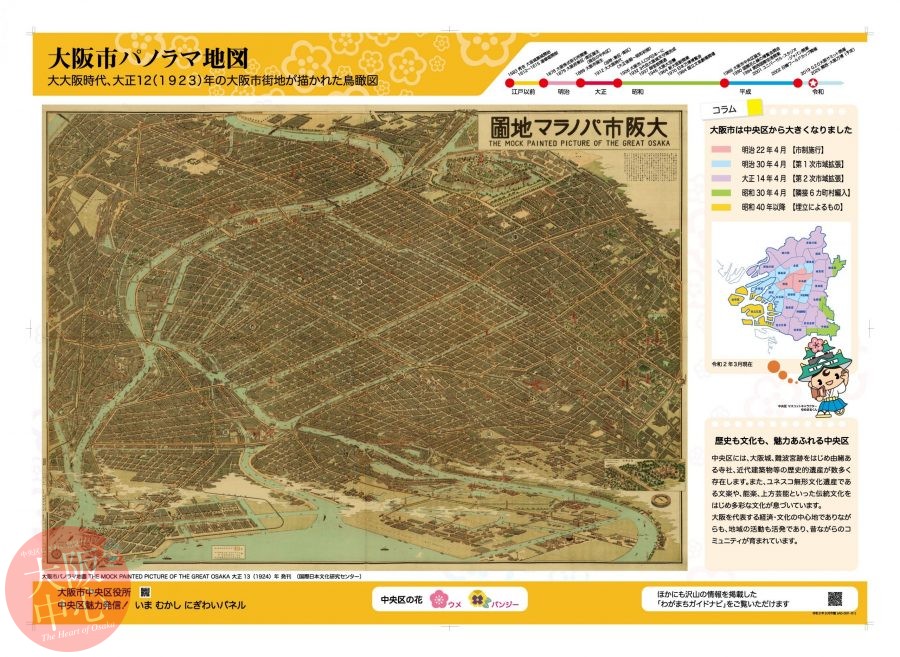
A0D01 – Panoramic Map of Osaka City A bird’s-eye view of the city of Osaka in 1923, during the Dai-Osaka (Great Osaka) era.
The Rich History and Culture of Chuo Ward Chuo Ward is home to a number of his …
中央区の歴史をパネルにしてみました。江戸時代絵図から現代の写真まで、歴史ある中央区のを絵と写真で解説。
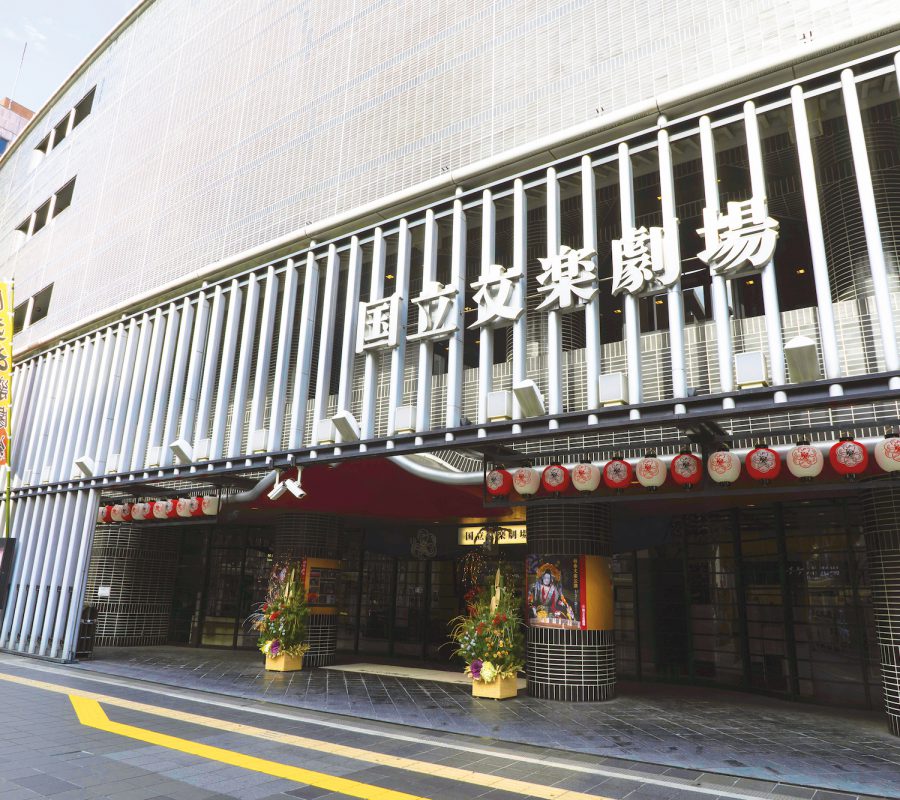
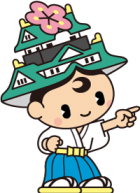
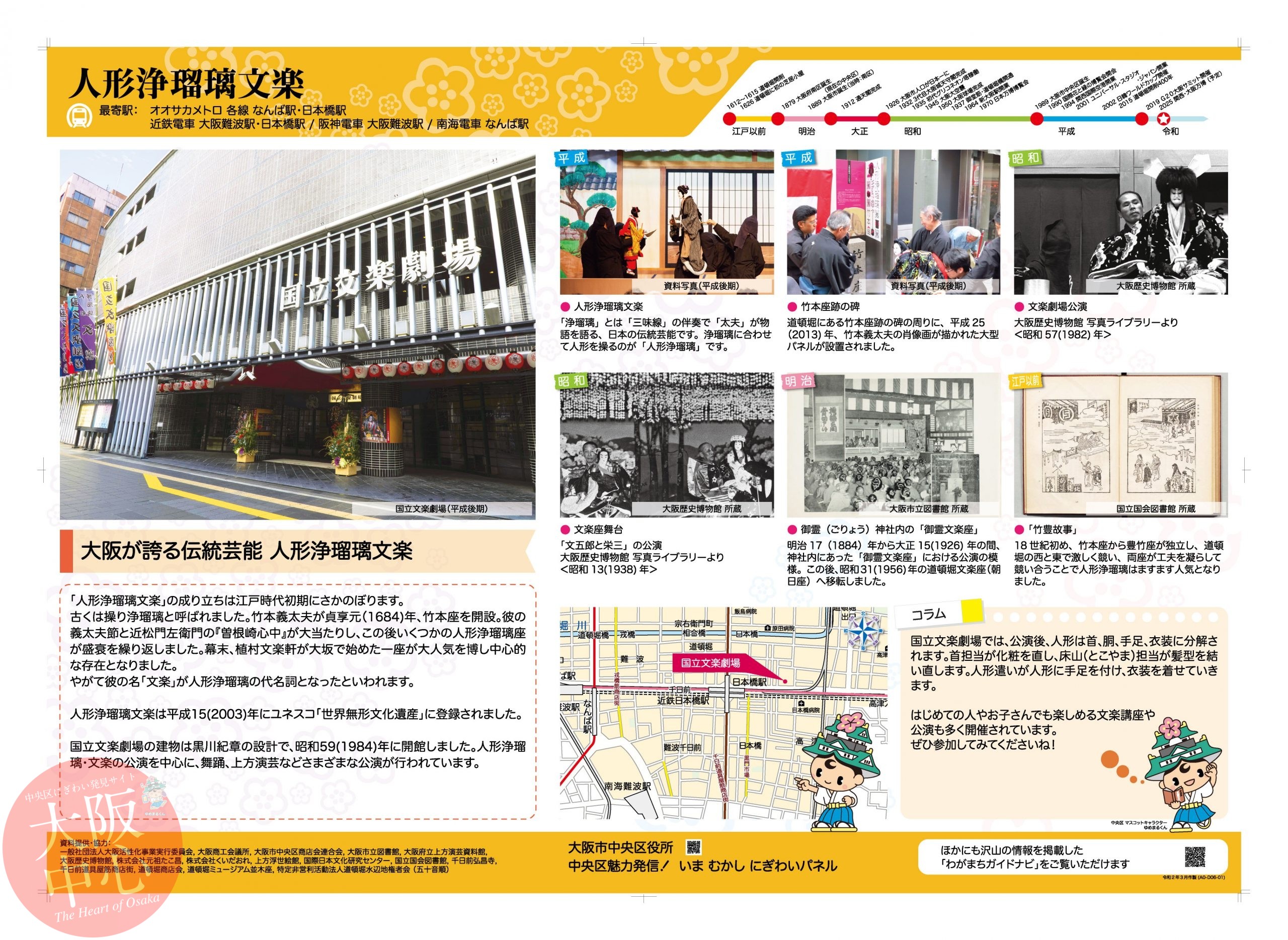
At the National Bunraku Theatre, the puppets are disassembled into head, torso, limbs, and costume parts after performances. The kashira (puppet head) staff touches up its makeup, while the tokoyama (puppet hair designer) staff re-styles its hair. Then the puppeteer attaches its limbs and puts its costume on.
There are many Bunraku lectures and performances held that even children and newcomers to Bunraku can enjoy.
Try it for yourself and see!
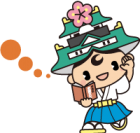

The Rich History and Culture of Chuo Ward Chuo Ward is home to a number of his …

Dotombori: The Landmark of a Bustling City Doton, who was involved in the cons …
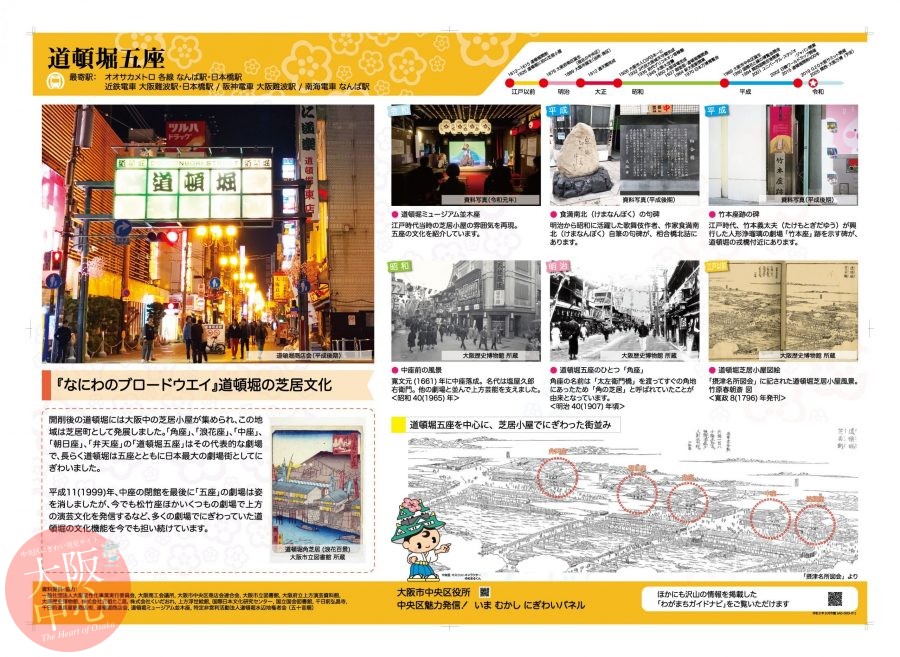
The Broadway of Naniwa: Dotombori’s Theater Culture After the excavation of Do …
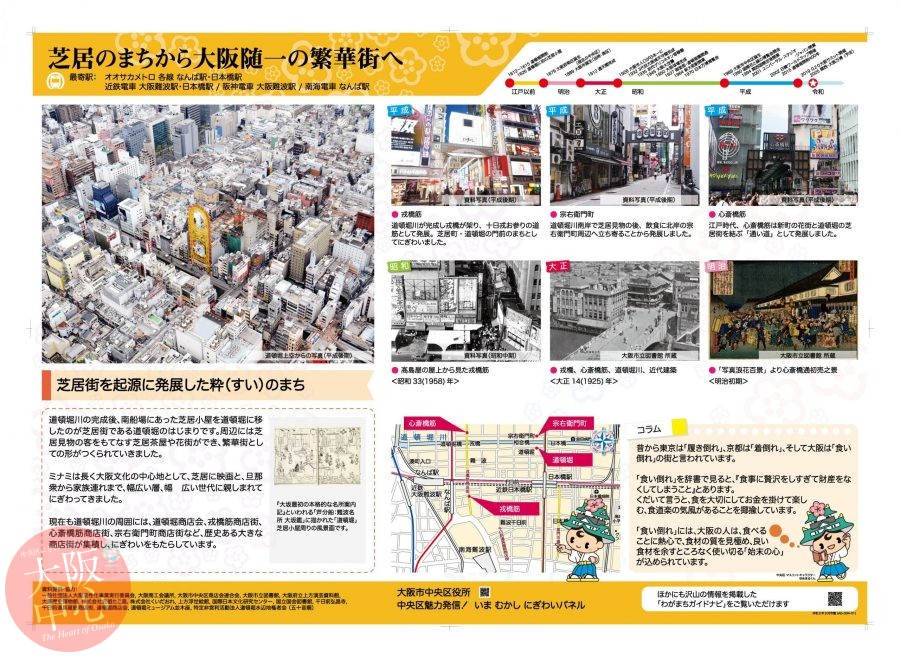
A stylish area with its roots in the theater district After the construction o …
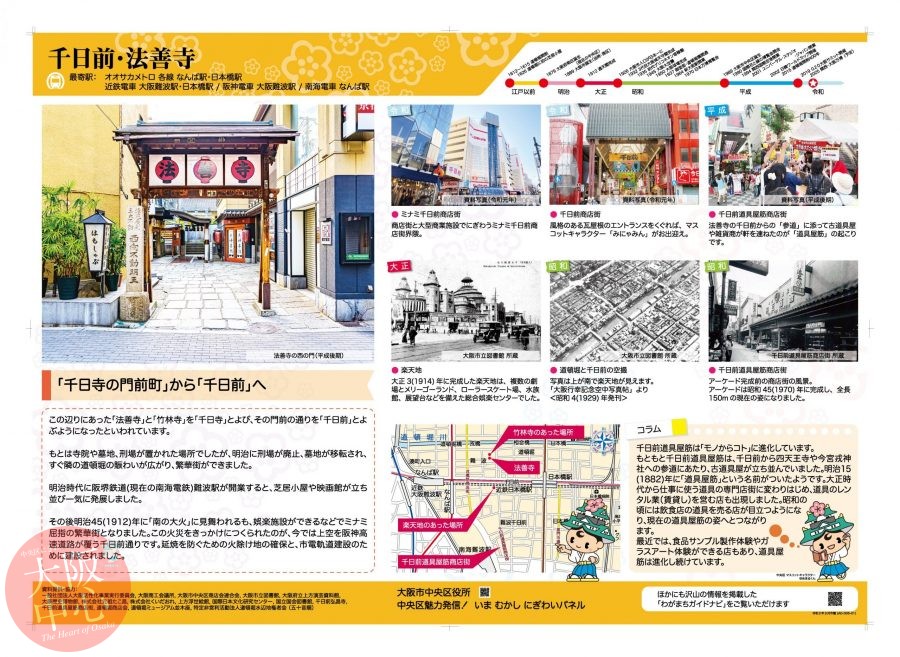
Evolving from the temple town of Sennichidera to Sennichimae It is said that H …
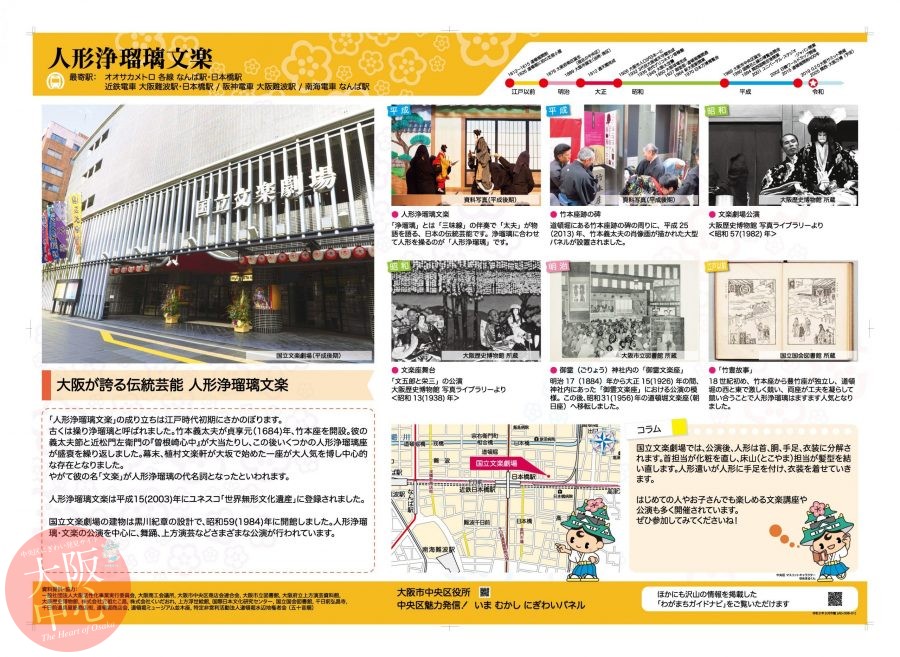
Ningyo Joruri Bunraku: A proud traditional performing art of Osaka The origins …
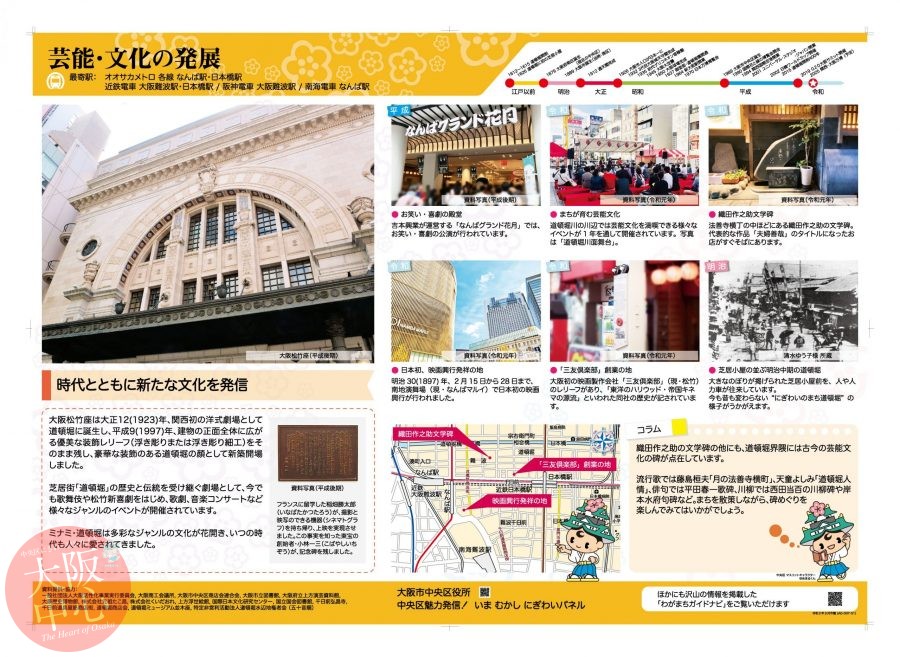
Disseminating new culture that reflects the times Osaka Shochikuza opened in D …

Ebisubashi Bridge has become a world-famous tourist attraction. It is said tha …
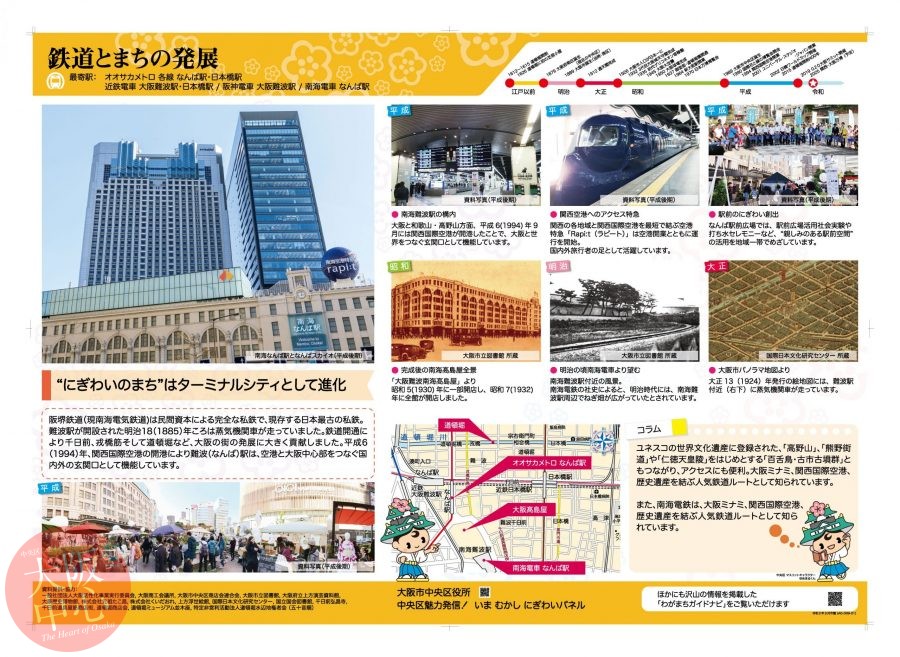
A bustling city evolving into a hub for travel Hankai Railway (now Nankai Elec …
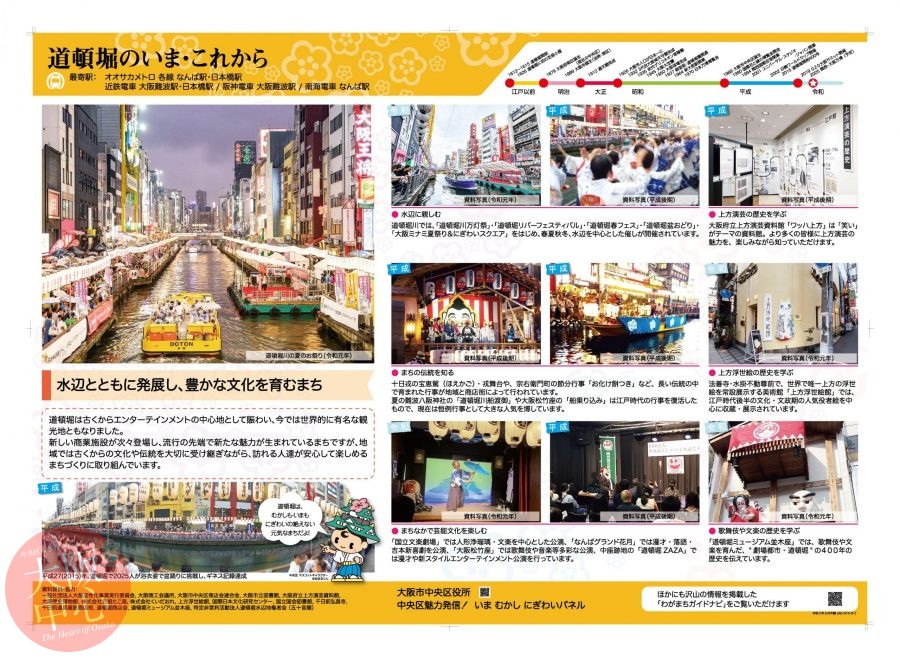
Developing the waterfront and nurturing a rich culture Dotombori has long been …